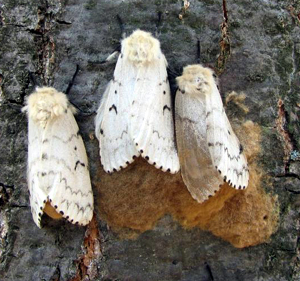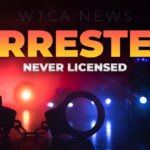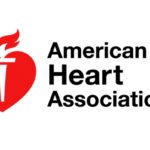 01/26/11 The DNR will conduct public meetings for proposed gypsy moth treatments in or part of Adams, Allen, Grant, Lake, La Porte, Marshall, Miami, Porter, Starke St. Joseph, and Wabash, counties from Jan. 25-Feb. 10, to discuss the presence of the invasive gypsy moth insect, problems associated with infestations, and methods for dealing with the insect.
01/26/11 The DNR will conduct public meetings for proposed gypsy moth treatments in or part of Adams, Allen, Grant, Lake, La Porte, Marshall, Miami, Porter, Starke St. Joseph, and Wabash, counties from Jan. 25-Feb. 10, to discuss the presence of the invasive gypsy moth insect, problems associated with infestations, and methods for dealing with the insect.
The local meeting will be on Wednesday, January 26th at the Plymouth Public Library at 3 p.m. and 6 p.m. Another meeting will be held on Thursday, January 27th at the Walkerton Community Building at 6 p.m.
While open to anyone, the meetings will be geared toward residents of the sites listed above that have been identified as having infestations. Maps are available at gypsymoth.IN.gov.
At the meetings, personnel from the Entomology & Plant Pathology and Forestry divisions of the DNR will propose options for treatment. The representatives also will welcome questions and comments.
Written comments may be submitted to Department of Natural Resources, Attn: Gypsy Moth, Division of Entomology & Plant Pathology, 402 W. Washington St., Indianapolis, IN, 46204, or e-mailed to: DEPP@dnr.IN.gov. The comment period runs through Feb. 25 at 4:30 p.m. EST.
Options for dealing with gypsy moth that will be discussed in detail at the meetings include:
– Taking no action,
– Using mass trapping, which involves setting a large number of traps in a concentrated area to capture male gypsy moths before they have a chance to locate and mate with females, or
– Using biological control, which involves the aerial application of the naturally occurring bacteria Btk (Bacillus thuringiensis var. kurstaki), which eliminates gypsy moth larvae, or
– Using mating disruption, which involves the aerial application of the gypsy moth mating pheromone (or scent) that confuses male gypsy moths and prevents mating, or
– Using integrated pest management, which involves the combined use of the above options.
Those unable to attend one of the public meetings will find and may view the meeting’s PowerPoint presentation, a copy of the meeting content text sheet, a series of question-and-answer documents, as well as maps of the exact sites of concern and further information about the gypsy moth at gypsymoth.IN.gov.














